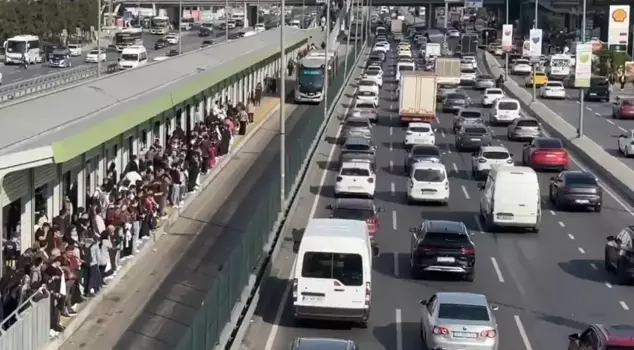
02.10.2025 17:10
After the earthquake in Istanbul, many people left their homes, schools, and workplaces and flooded the roads with their private vehicles. Traffic congestion in the city increased rapidly. Vehicles struggled to move along certain sections of the D-100 highway and the TEM motorway, as well as on main roads and streets.
After the earthquake felt in Istanbul, many people left their homes, schools, and workplaces and flocked to the roads with their private vehicles. Traffic congestion in the city increased rapidly.
On some sections of the D-100 highway and the TEM Highway, vehicles struggled to move forward on main arteries and streets. While congestion was observed at the entrances of the 15 July Martyrs Bridge and the Fatih Sultan Mehmet Bridge, it was reported that transportation in the Eurasia Tunnel continued smoothly.
On the European side, congestion formed on the D-100 highway in the direction of Edirne from Zincirlikuyu to Beylikdüzü. In the direction of Ankara, the traffic starting from Beylikdüzü extended to the 15 July Martyrs Bridge through Cevizlibağ, Haliç, and Mecidiyeköy. Congestion was also experienced at the connection points of the TEM Highway on Basın Ekspres Street and Haramidere.
On the Asian side, vehicles struggled to move in Üsküdar, Kadıköy, Ataşehir, and Ümraniye. According to the traffic data from the Istanbul Metropolitan Municipality, traffic congestion was measured at 60% on the Asian side, 71% on the European side, and 67% overall in the city.
NO DISRUPTION IN AIR TRAFFIC
After the earthquake, there were no issues in air transportation. In a statement made by the Sabiha Gökçen Airport Authority HEAŞ, it was reported that inspections of the terminal, apron, taxiways, and runways were completed and no negative conditions were found. The statement said, "Our airport operations continue uninterrupted."
It was also stated that there were no disruptions in flights at Istanbul Airport due to the earthquake.